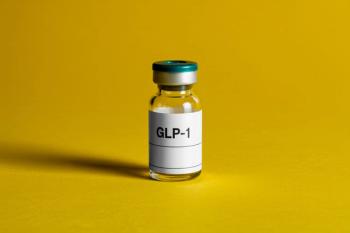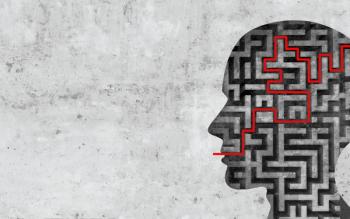
- Psychiatric Times Vol 25 No 12
- Volume 25
- Issue 12
Psychiatric Comorbidity in Emergency Department Patients
Emergency medicine provides care to a vast number of patients each year. In 2005, 115.3 million people visited emergency departments (EDs).
Emergency medicine provides care to a vast number of patients each year. In 2005, 115.3 million people visited emergency departments (EDs).1 Although the number of people who visit an ED significantly increased from 96.5 million in 1995 to 115.3 in 2005, the number of ED facilities decreased from 4176 to 3795 in the same period.1 This created additional pressure on ED physicians to reduce patient throughput time and the potential for increased neglect of psychiatric disorders.
This article provides an overview of the prevalence of psychiatric comorbidity among patients who present to the ED and documents the relationship of psychiatric comorbidity to disposition decisions. In addition, the implications of the observed comorbidity rates and disposition decisions are discussed.
Epidemiology
In 2002, 43% of all hospitalizations originated in the ED-a 17% increase since 1997.2 Hospitalization costs consume one-third of the entire US health care budget and make hospitalization the single most costly component of the health care system.2 It is of considerable interest, from both economic and mental health perspectives, to determine how often ED patients with single and multiple psychiatric disorders are hospitalized. At present, little is known about the extent of psychiatric comorbidity (defined as 2 or more co-occurring psychiatric disorders) in patients who present to the ED.
Before assessing comorbidity rates, we summarize the psychiatric prevalence obtained in the National Comorbidity Survey Replication (NCS-R) study.3 The data show that the 12-month prevalence of any psychiatric disorder was 26%. Of the total number of patients identified with a psychiatric disorder, 55% had a diagnosis of 1 disorder; 22.3% had 2 diagnoses; and 23% had 3 diagnoses. Estimated prevalences for the 4 most frequently occurring disorders were anxiety disorders, 18.0%; mood disorders, 9.5%; impulse control disorders, 8.9%; and substance use disorders, 3.8%.3 Other researchers have reported 12-month substance use disorder rates to be as high as 9.35%.4
There are several reasons to expect rates of psychiatric disorders among ED patients to equal (or exceed) those reported in the NCS-R study:
• There is a concentration of the homeless, chronically ill, uninsured, and impoverished in ED populations.5-8
• The poor who rely on EDs for routine health care have relatively limited access to quality mental health care services.9,10
• A strong relationship has been found between poverty and mental illness.11-13
Low rates of psychiatric disorders might be expected if ED physicians focus primarily on presenting physical complaints because of time constraints and, perhaps, because of a lack of interest in psychiatric problems in this setting. In 2001, 6% of all ED visits were for mental health issues.14 This 6% rate is far lower than the 26% reported by the NCS-R studyand indicates that ED physicians are not consistently screening for mental health disorders.14
The deinstitutionalization of mental health patients and a shortage of community-based psychiatric services have been identified as major contributors to the increased visits to EDs by patients with psychiatric disorders over the past decade.15-17 Psychiatric patients require intensive ED staff resources and close supervision, and when inebriated, psychotic, or belligerent, these patients can disrupt the care provided to other patients.18 According to the recent American College of Emergency Physicians study, 62% of ED directors surveyed said that psychiatric patients in the EDs received no psychiatric services before hospital admission or transfer.19 Close to one-quarter of the ED directors (23%) surveyed indicated that they had no community psychiatric resources available for psychiatric patients; over half (59%) reported that there were no services available for persons with substance use disorders or dual diagnoses.
While there are many community-based studies of psychiatric comorbidity, few researchers have examined how psychiatric comorbidity influences the disposition of ED patients.20-22 This is surprising because, compared with patients with a single psychiatric diagnosis, patients with multiple psychiatric disorders often have more severe pathology, increased illness duration, reduced treatment responsiveness and adherence, greater functional impairment, higher suicide rates, and increased ED visits.23-26
In our literature review, we found only 1 study that explicitly examined how psychiatric comorbidity influenced hospitalization decisions. In that study, which used data from the 2004 National Hospital Ambulatory Medical Care Survey (NHAMCS), ED patients with psychiatric comorbidity had a 5-fold increase in hospitalization relative to patients without psychiatric comorbidity.27
What our analyses show
We analyzed data from NHAMCS for 3 consecutive years (2002 through 2004).28-30 There were 91,118 visits by patients 15 years and older. We created psychiatric categories (such as depression, psychosis, substance use disorders) to be compatible with those in DSM-IV. The weighting, strata, and cluster factors provided by NHAMCS were used to estimate pop-ulation parameters and associated standard errors.
Approximately 6% of all 91,118 patients received a diagnosis of at least 1 psychiatric disorder (95% confidence interval (CI), 6.1% - 6.7%). The 4 most frequently occurring psychiatric categories were:
• Substance use disorders (2.27%; 95% CI, 2.10% - 2.46%).
• Mood disorders (1.63%; 95% CI, 1.50% - 1.78%).
• Anxiety disorders (1.24%; 95% CI, 1.14% - 1.35%).
• Psychoses (1.20%; 95% CI, 1.09% - 1.32%).
Approximately 1.3% (95% CI, 1.13% - 1.39%) of all patients visiting the ED had at least 2 psychiatric disorders. This represented about 2.8 million psychiatric comorbidity patient visits during the 3 years. The hospitalization rate of patients with 2 or more psychiatric disorders (48.49%) was much greater than the hospitalization rate of patients with 1 or no psychiatric disorder.
We also compared the hospitalization rate of patients with only psychiatric comorbidities and no medical conditions with that of patients with only a medical condition. Far more patients with comorbidities who had no medical condition were hospitalized than were patients with medical diagnoses and no psychiatric diagnosis (52.1% vs 17.93%, respectively). The 4 most frequently occurring comorbidity pairs were:
• Substance use disorders plus mood disorders.
• Substance use disorders plus psychoses.
• Substance use disorders plus substance use disorders (these represent diagnoses from 2 different drug categories).
• Psychoses plus mood disorders.
It is sobering to realize that when studies are designed to assess the prevalence of specific mental disorders in patients who present to the ED, the rates of several specific mental disorders are higher than the total annual psychiatric rate found in the NHAMCS data. For example, studies that explicitly screened for depression found the depression rate among ED patients to be at least 20%.31,32 Part of the reason for the low rate of depression diagnoses (1.63%) in the NHAMCS data is that physicians infrequently screen for depressive symptoms.33
Medical and psychiatric comorbidities
ED patients with substance use problems often present with a complex array of symptoms that include neurological deficits, cardiopulmonary crises, cognitive disorders, and suicidal ideation. Accurate assessment and care of such patients is difficult in an ED setting. These patients often require a greater array of services and a longer period of stabilization than can be provided in an ED.
Substance use disorders also interact synergistically with many comorbid psychiatric disorders; this further complicates the care of such patients. For example, substance use can increase suicidal thinking among depressed patients, and substance use can amplify delusions, hallucinations, and paranoia among psychotic patients.34,35 Patients with substance use disorders are often nonadherent, and the more severe the comorbid disorders the less likely that the patients will adhere to therapy.36-38 The high hospitalization rates of patients with psychiatric comorbidities, including substance use, clearly indicate that ED physicians recognize the difficulty in caring for such patients in the ED.
Although there are several possible reasons why the hospitalization rate is so high for patients with 2 or more psychiatric disorders, we note 2 important reasons. First, the psychiatric disorders that are diagnosed by the ED physicians are often the more severe disorders, such as substance use, psychosis, and depression. Second, compared with patients with a single psychiatric diagnosis, patients with psychiatric comorbidities have significantly more serious illness, greater functional impairments, higher ED visit and suicide rates, and extended illness duration because of reduced treatment adherence. Thus, the higher hospitalization rates of patients with psychiatric comorbidities reflect both the seriousness of the individual diagnoses and the synergistic effects of these co-occurring mental disorders.
Summary
It is important to emphasize that the comorbidity rate based on data analysis from NHAMCS is far below the comorbidity rate documented by the NCS-R study, which suggests that many high-need psychiatric patients are not being identified in EDs. The failure to identify and treat these patients is unsound medical practice, since untreated psychiatric disorders that co-occur with medical conditions decrease treatment adherence and increase health care costs, morbidity, and mortality.39,40
Some argue that emergency medicine should focus only on urgent or emergent accidents, injuries, or diseases. A major problem with this position is that approximately 50% of all ED visits are neither urgent nor emergent, so ED physicians are already performing nontrauma evaluations.1 Failure to take the opportunity to provide services to patients with psychiatric problems is short-sighted, since medical patients with psychiatric comorbidity and patients with 2 or more psychiatric disorders disproportionately use health care resources and experience increased functional impairments.41 The failure to initiate screening, provide treatment, or arrange for outpatient services can exacerbate the psychiatric and medical problems of these patients and also increase the future burden on the health care system.
Findings indicate that the psychiatric diagnoses of ED physicians only moderately match those of psychiatrists and correlate poorly with standardized tests-strong indications that there is a need for psychiatric expertise in the ED.42,43 With more time and effort expended in assessing ED patients with psychiatric issues, different avenues of treatment may be identified that would reduce the need to hospitalize so many of these patients. It may well be that ED physicians have difficulty discriminating those psychiatric patients who are truly disabled and require intensive inpatient hospitalization from those who could benefit from diversion to outpatient treatment centers.
Psychiatric disorders in general, and psychiatric comorbidity in particular, represent a significant burden not only to the patients and their families but to the health care system as well. There is a good deal of resistance to the idea that EDs could play an increasing role in addressing the psychiatric needs of patients. The time has come, however, to acknowledge that patient care could be significantly enhanced if mental health professionals were routinely available in EDs to help screen for psychiatric disorders and to participate in treatment planning. By assuming responsibilities for psychiatric screening and identification of alternative treatment venues, mental health professionals could reduce the diagnostic burdens of ED physicians, increase diagnostic accuracy, and provide critically needed services to a large segment of the population whose mental health needs are routinely ignored.
References:
References
1. Nawar EW, Niska RW, Xu J. National Hospital Ambulatory Medical Care Survey: 2005 emergency department summary. Adv Data. 2007;(386):1-32.
2. Merrill CT, Elixhauser A. Hospitalization in the United States, 2002. Rockville, MD: Agency for Healthcare Research and Quality; 2005. Healthcare Cost and Utilization Project Fact Book No. 6/ AHRQ publication 05-0056.
3. Kessler RC, Chiu WT, Demler O, et al. Prevalence, severity, and comorbidity of 12-month DSM-IV disorders in the National Comorbidity Survey Replication. Arch Gen Psychiatry. 2005;62:617-627.
4. Grant BF, Stinson FS, Dawson DA, et al. Prevalence and co-occurrence of substance use disorders and independent mood and anxiety disorders: results from the National Epidemiologic Survey on Alcohol and Related Conditions. Arch Gen Psychiatry. 2004;61:807-816.
5. Kushel MB, Perry S, Bangsberg D, et al. Emergency department use among the homeless and marginally housed: results from a community-based study. Am J Public Health. 2002;92:778-784.
6. Walls CA, Rhodes KV, Kennedy JJ. The emergency department as usual source of medical care: estimates from the 1998 National Health Interview Survey. Acad Emerg Med. 2002;9:1140-1145.
7. Merrill CT, Owens PL, Stocks C. Pediatric Emergency Department Visits in Community Hospitals From Selected States, 2005. Healthcare Cost and Utilization Statistical Brief 52. Rockville, MD: Agency for Healthcare Research and Quality; 2008.
8. Ginde AA, Weiner SG, Pallin DJ, Camargo CA Jr. Multicenter study of limited health literacy in emergency department patients. Acad Emerg Med. 2008; 15:577-580.
9. Lasser KE, Himmelstein DU, Woolhandler SJ, et al. Do minorities in the United States receive fewer mental health services than whites? Int J Health Serv. 2002;32:567-578.
10. AlegrÃa M, Canino G, RÃos R, et al. Inequalities in use of specialty mental health services among Latinos, African Americans, and non-Latino whites. Psychiatr Serv. 2002;53:1547-1555.
11. Saraceno B, Barbui C. Poverty and mental illness. Can J Psychiatry. 1997;42:285-290.
12. Das J, Do QT, Friedman J, et al. Mental health and poverty in developing countries: revisiting the relationship. Soc Sci Med. 2007;65:467-480.
13. Hudson CG. Socioeconomic status and mental illness: tests of the social causation and selection hypotheses. Am J Orthopsychiatry. 2005;75:3-18.
14. Larkin GL, Claassen CA, Emond JA, et al. Trends in US emergency department visits for mental health conditions, 1992 to 2001. Psychiatr Serv. 2005;56: 671-677.
15. Kalucy R, Thomas L, King D. Changing demand for mental health services in the emergency department of a public hospital. Aust N Z J Psychiatry. 2005;39: 74-80.
16. King DL, Kalucy RS, De Crespigny CF, et al. Mental health and alcohol and other drug training for emergency department workers: one solution to help manage increasing demand. Emerg Med Australas. 2004;16:155-160.
17. Lamb HR, Weinberger LE, DeCuir WJ Jr. The police and mental health. Psychiatr Serv. 2002;53:1266-1271.
18. DeLia DD. Hospital capacity, patient flow, and emergency department use in New Jersey: a report to the New Jersey Department of Health and Senior Services. New Brunswick, NJ: Rutgers University Center for State Health Policy; September 2007.
19. American College of Emergency Physicians. American College of Emergency Physicians Psychiatric and Substance Abuse Survey. People needing psychiatric help experience long waits in ERs. June 26, 2008.
http://www.usatoday.com/news/health/
2008-06-16-ERwaits_N.htm. Accessed September 19, 2008.
20. Robins LN, Locke BZ, Regier DA. An overview of psychiatric disorders in America: the Epidemiologic Catchment Area Study. In: Robins LN, Regier DA, eds. Psychiatric Disorders in America. New York: Free Press; 1991:328-366.
21. Alonso J, Angermeyer MC, Bernert S, et al. 12-Month comorbidity patterns and associated factors in Europe: results from the European Study of the Epidemiology of Mental Disorders (ESEMeD) project. Acta Psychiatr Scand Suppl. 2004;(420):28-37.
22. Grant BF, Hasin DS, Stinson FS, et al. Prevalence, correlates, and disability of personality disorders in the United States: results from the national epidemiologic survey on alcohol and related conditions. J Clin Psychiatry. 2004;65:948-958.
23. Kramer TL, Booth BM, Han X, Williams DK. Service utilization and outcomes in medically ill veterans with posttraumatic stress and depressive disorders.
J Trauma Stress. 2003;16:211-219.
24. Emslie GJ, Mayes TL, Laptook RS, Batt M. Predictors of response to treatment in children and adolescents with mood disorders. Psychiatr Clin North Am. 2003;26:435-456.
25. Overbeek T, Schruers K, Vermetten E, Griez E. Comorbidity of obsessive-compulsive disorder and depression: prevalence, symptom severity, and treatment effect. J Clin Psychiatry. 2002;63:1106-1112.
26. Wu LT, Kouzis AC, Leaf PJ. Influence of comorbid alcohol and psychiatric disorders on utilization of mental health services in the National Comorbidity Survey. Am J Psychiatry. 1999;156:1230-1236.
27. Kunen S, Prejean C, Gladney B, et al. Disposition of emergency department patients with psychiatric comorbidity: results from the 2004 National Hospital Ambulatory Medical Care Survey. Emerg Med J. 2006; 23:274-275.
28. McCaig LF, Burt CW. National Hospital Ambulatory Medical Care Survey: 2002 emergency department summary. Adv Data. 2004;(340):1-34.
29. Middleton K, Hing E. National Hospital Ambulatory Medical Care Survey: 2003 outpatient department summary. Adv Data. 2005;(366):1-36.
30. McCaig LF, Nawar EW. National Hospital Ambulatory Medical Care Survey: 2004 emergency department summary. Adv Data. 2006;(372):1-29.
31. Castilla-Puentes RC, Secin R, Grau A, et al. A multicenter study of major depressive disorder among emergency department patients in Latin-American countries. Depress Anxiety. 2007 Nov 2 [Epub ahead of print].
32. Kumar A, Clark S, Boudreaux ED, Camargo CA Jr. A multicenter study of depression among emergency department patients. Acad Emerg Med. 2004;11: 1284-1289.
33. Rhodes KV, Kushner HM, Bisgaier J, Prenoveau E. Characterizing emergency department discussions about depression. Acad Emerg Med. 2007;14:908-911.
34. Lynskey MT, Glowinski AL, Todorov AA, et al. Major depressive disorder, suicidal ideation, and suicide attempt in twins discordant for cannabis dependence and early-onset cannabis use. Arch Gen Psychiatry. 2004;61:1026-1032.
35. Thirthalli J, Benegal V. Psychosis among substance users. Curr Opin Psychiatry. 2006;19:239-245.
36. Compton WM 3rd, Cottler LB, Jacobs JL, et al. The role of psychiatric disorders in predicting drug dependence treatment outcomes. Am J Psychiatry. 2003;160:890-895.
37. Herbeck DM, Fitek DJ, Svikis DS, et al. Treatment compliance in patients with comorbid psychiatric and substance use disorders. Am J Addict. 2005;14:195-207.
38. Owen RR, Fischer EP, Booth BM, Cuffel BJ. Medication noncompliance and substance abuse among patients with schizophrenia. Psychiatr Serv. 1996;47: 853-858.
39. Penninx BW, Beekman AT, Honig A, et al. Depression and cardiac mortality: results from a community-based longitudinal study. Arch Gen Psychiatry. 2001;58:221-227.
40. Sayers SL, Hanrahan N, Kutney A, et al. Psychiatric comorbidity and greater hospitalization risk, longer length of stay, and higher hospitalization costs in older adults with heart failure. J Am Geriatr Soc. 2007;55: 1585-1591.
41. Owens P, Myers M, Elixhauser A, Brach C. Care of Adults With Mental Health and Substance Abuse Disorders in US Community Hospitals, 2004. Rockville, MD: Agency for Healthcare Research and Quality; 2007. Healthcare Cost and Utilization Fact Book No. 10. Agency for Healthcare Research and Quality publication 07-0008.
http://www.ahrq.gov/data/hcup/factbk10/factbk10.pdf
. Accessed September 19, 2008.
42. Garbrick L, Levitt MA, Barrett M, Graham L. Agreement between emergency physicians and psychiatrists regarding admission decisions. Acad Emerg Med. 1996;3:1027-1030.
43. Meldon SW, Emerman CL, Schubert DS. Recognition of depression in geriatric ED patients by emergency physicians. Ann Emerg Med. 1997;30:442-447.
Articles in this issue
about 17 years ago
Untreated Vets: A “Gathering Storm” of PTSD/Depressionabout 17 years ago
Detainee Interrogations: Important to Remember Our Pastabout 17 years ago
SSRIs, Adolescent Suicide, and the Black Box: Lingering Questionsabout 17 years ago
In the Valley of Elahabout 17 years ago
Topical NSAIDs: Old Wine in a New Bottleabout 17 years ago
Is Diagnosis of Comorbidities Obsolete?about 17 years ago
Patienthood: A Different Form of Beingabout 17 years ago
Underdiagnosing and Overdiagnosing Psychiatric Comorbiditiesabout 17 years ago
Psychiatric Comorbidity Associated With Pathological Gamblingabout 17 years ago
NIMH Plans Accelerating Research to RemediesNewsletter
Receive trusted psychiatric news, expert analysis, and clinical insights — subscribe today to support your practice and your patients.













